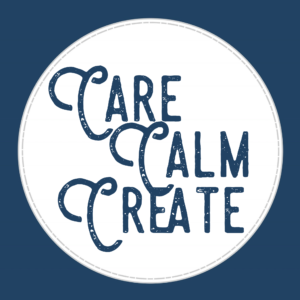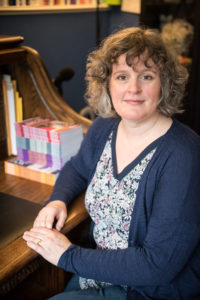Annually since 2006, best-selling author and speaker Chris Brogan has focused his year using a simple system he created. It’s called “My Three Words.” It’s designed to “guide [our] actions and choices over the year to come.” For me, my words are more effective than short-lived New Year’s resolutions and more durable than affirmations.
Ideally, My Three Words becomes part of our daily practice. It’s a shorthand reminder of the things we’ve chosen to focus on and a touchstone to ensure we’re investing our resources (what I call time, talent, and treasure) in alignment with our goals. As an example of how I remember to check in with these words, I write them on every page of my paper planner so that I see them every time I look at my task list.
My Three Words in Public (for the First Time)
I’ve played along for many years but rarely, if ever, shared my three words publicly. That changes now. For 2021, I’ve picked three simple but meaningful words: care, calm, and create.
Care
Everyone needs Tender Loving Care (TLC) sometimes. 2021 is going to be a big year for looking after ourselves and each other.
For me, care encompasses the self-care I need to do to keep myself mentally and physically fit. I want to thrive, not just survive. I know I need long walks, good sleep, healthy foods, some treats, companionship, solitude, connection, and so on. I see care as the things I must do for myself every single day.
Care is also about looking after the people around me. I think of this as community care. My family comes first, of course. I also do what I can to look after my neighbors, my students, my friends, and, sometimes, strangers. This care manifests as practical support and social support, with the occasional infusion of TLC via snail mail.
I also want to embrace a broader worldview of care. I want to counteract “who cares?” online by vanquishing fake news, being alert to bias, looking for gender equality, and seeking diverse views. I can’t fix the internet alone but I can model these behaviors and demonstrate that I care.
Calm
As the carol Silent Night goes, “all is calm, all is bright.” While it’s impossible to be calm all the time, I want calm to be my default state. I’d like to be at peace, aware, and ready for each day. I find I am most productive when I’m calm. At peace, I make better, conscious choices in all areas of my life.
I also have a theory that people who exude calm can create calm in others. I’m sure there’s some psychological term for this. It’s the opposite of mass hysteria. If my calm can ease someone else’s day, that’s a good thing.
Create
Create may be last on my list but it’s my brightest touchstone for the year ahead. I want to make things and make things happen.
Most of my professional projects use words as their building blocks. I’ve got a new book coming out this year. It takes a lot of time, research, energy, and focus to create a book. I can’t wait to share more about this one with you.
I also want to spend more time creating things with paper. I make one-of-a-kind journals, notebooks, calendars, and other practical things at my craft table. I love to play with paper and it’s a hobby that has been frequently neglected in recent years. It’s getting more of my attention in 2021.
And, maybe, along the way, I’ll help create social change as I introduce my university students to topics such as representation, accessibility, and corporate social responsibility.
I also want to inspire them to be mindful of how and when they use social media and guide them to create personalized plans to counteract doomscrolling.
Upon Reflection
In retrospect, my three words for 2020 — scaffold, visualization, and affluence — were complex words for what turned out to be a complicated year. Let’s hope my simpler choices for 2021 reflect an easier year ahead for us all.
Share Your Three Words
If you like, share your three words in the comments or on social media. I’m @AngelaCrocker on Instagram and Twitter. Add #My3Words to join Chris Brogan’s global conversation: Search to see what’s been posted with that hashtag. It is also a great source of inspiration!






